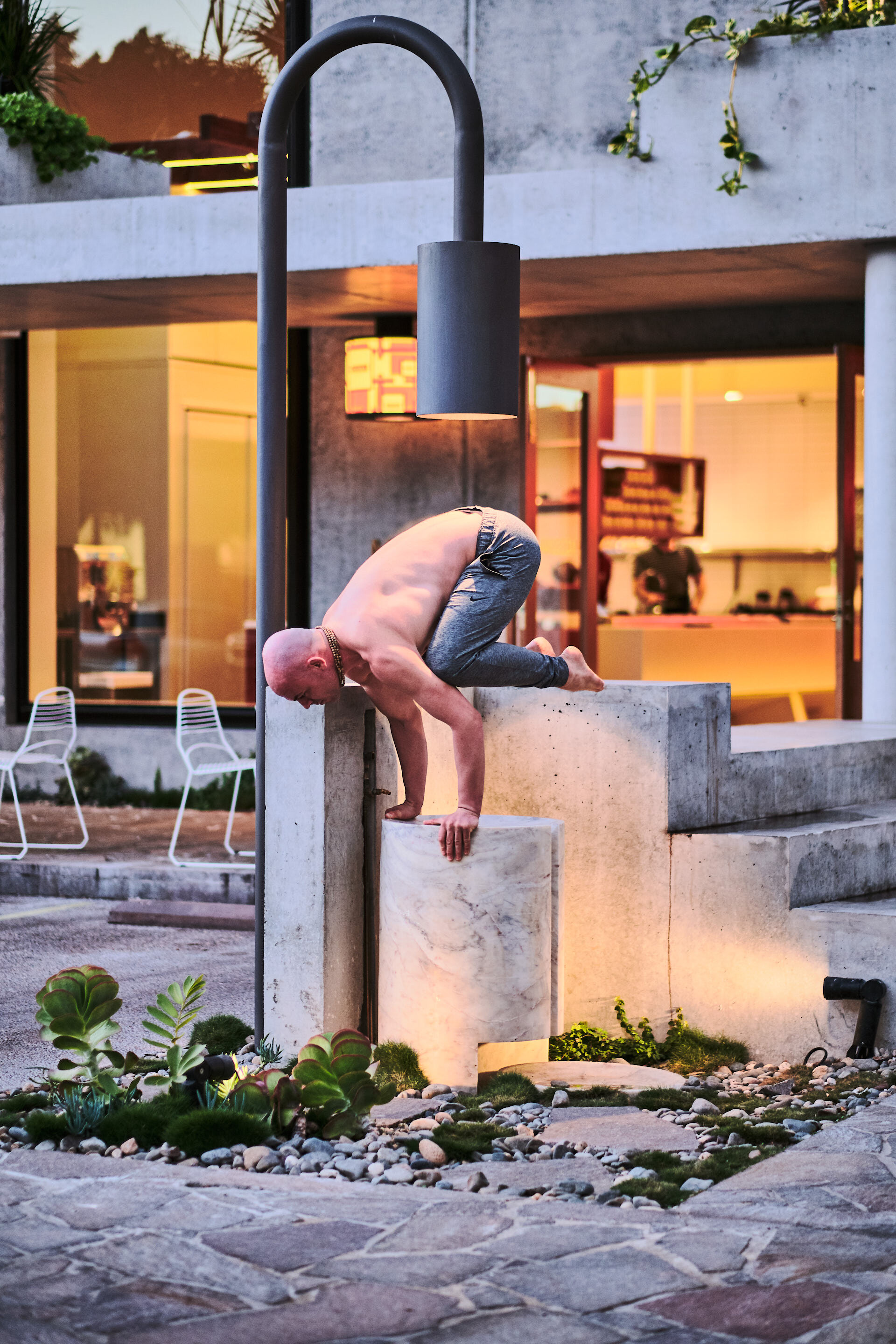Posture of the month: Bakasana (Crane Pose)
Our final Posture of the Month for 2019 is bakasana, the Crane Pose. Back to arm balances with the posture that’s the easiest one to get into for arm balancing beginners.
Bakasana is the Sanskrit term for 'Crane Pose' (from baka: crane and asana: posture). It is often mistakenly referred to as Crow Pose - a very similar posture that, if you look it up - can be found under the name of kakasana. You'll learn about the differences in class...
“I am strong, because I have been weak. I am fearless, because I have been afraid. I am wise, because I have been foolish.”
Researching asanas and their meaning is fascinating every month. But bakasana will probably take the cup for the most meaningful story behind the posture. I found it on numerous yoga blogs, but the one I want to credit is rexburgyoga.com where the following story excerpt comes from.
The story behind the posture
Bakasana refers to a story in the epic Mahabharata. The crane is the disguise for a forest ogre inhabiting the forest where the five Pandava brothers are exiled. They are the good guys in the great epic and - at that stage - have been living in their forest exile for 12 years. The oldest brother, Yudhisthira, is the wisest, most truthful and level-headed of them, and a good choice to be the emperor, which he was before they were exiled.
One day, they badly need water, so Yudhisthira sends each brother to a nearby lake. None of them come back though, so finally Yudhisthira himself leaves to solve the mystery…
Reaching the lake, he sees all his brothers dead along the bank. In his grief, he notices a crane and it begins to talk. Baka had warned each of the brothers that if they drank the water without his permission, it would turn to poison and they would die.
Yet each of the brothers saw the crane as an enemy challenging their strength, courage and rights. Having a heart at war and a promise to fulfil, they all went ahead anyway and died.
Hearing this, Yudhisthira - who always represents calm and level-headedness - quiets his grief and anger, and judges the situation with calm and cool. When he recognises that the crane is not an enemy, baka sheds his disguise and reveals that he is a forest ogre, a yaksha. He challenges Yudhisthira to answer 124 questions, thus earning the water. Some are riddles, some are teaching philosophy or virtuous universal principles. Thus, they are known to be deeply important teachings within the context of ancient Vedic philosophy. (Curious? Find all the questions and answers on the original blog post)
After answering all the questions, the yaksha is very pleased with Yudhisthira’s answers and tells him that no only can he drink as much water as he needs but to pick one brother he wants to revive from death. What a choice to make! Yudhisthira is closest to his brothers Arjuna and Bhima, since they have the same mother, but he chooses his stepbrother, Nakula. Bewildered, the yaksha asks why he would pick Nakula. “That’s the only way to honour both my mothers, by allowing one son from each of them to live in the world.” This thoughtful choice and sacrifice wins the Yaksha over and he agrees to revive all five brothers.
What a brilliant life lesson: What appears to be an enemy is often an ally in disguise! A confrontation with the enemy can be an occasion for inquiry. We must ask ourselves the questions about what we really believe - our core values. By articulating and clarifying those values, the enemy might turn out to be a well-wisher and companion. When practicing bakasana, remember that for proper balance, it is important to maintain a steady focus. Just like Yudhisthira created the best outcome by being wise, and remaining calm and focused ...
Health Benefits
As an arm balance, bakasana has several important benefits.
Firstly, on a physical level it strengthens your forearms, wrists and shoulders. Make sure to come to class and learn how to perform the posture correctly to avoid shoulder injuries.
Our belly loves it as it massages the abdominal organs and can therefore help with issues like indigestion.
Lastly, it is said to increase endurance and flexibility as well as mental calm and focus.
Ultimately, it teaches us to maintain a steady focus on lifting and flying, versus falling over and face planting onto our yoga mat. To perform the asana, we have to overcome our fear of falling - much like for headstand, handstand and all other arm balances.
~~~
To learn more, come along and join us for our daily practices at Flex in December, and watch our tutorial video below:
Sources for this post: The above mentioned blog post on rexburgyoga.com and a great article on doyouyoga.com.


